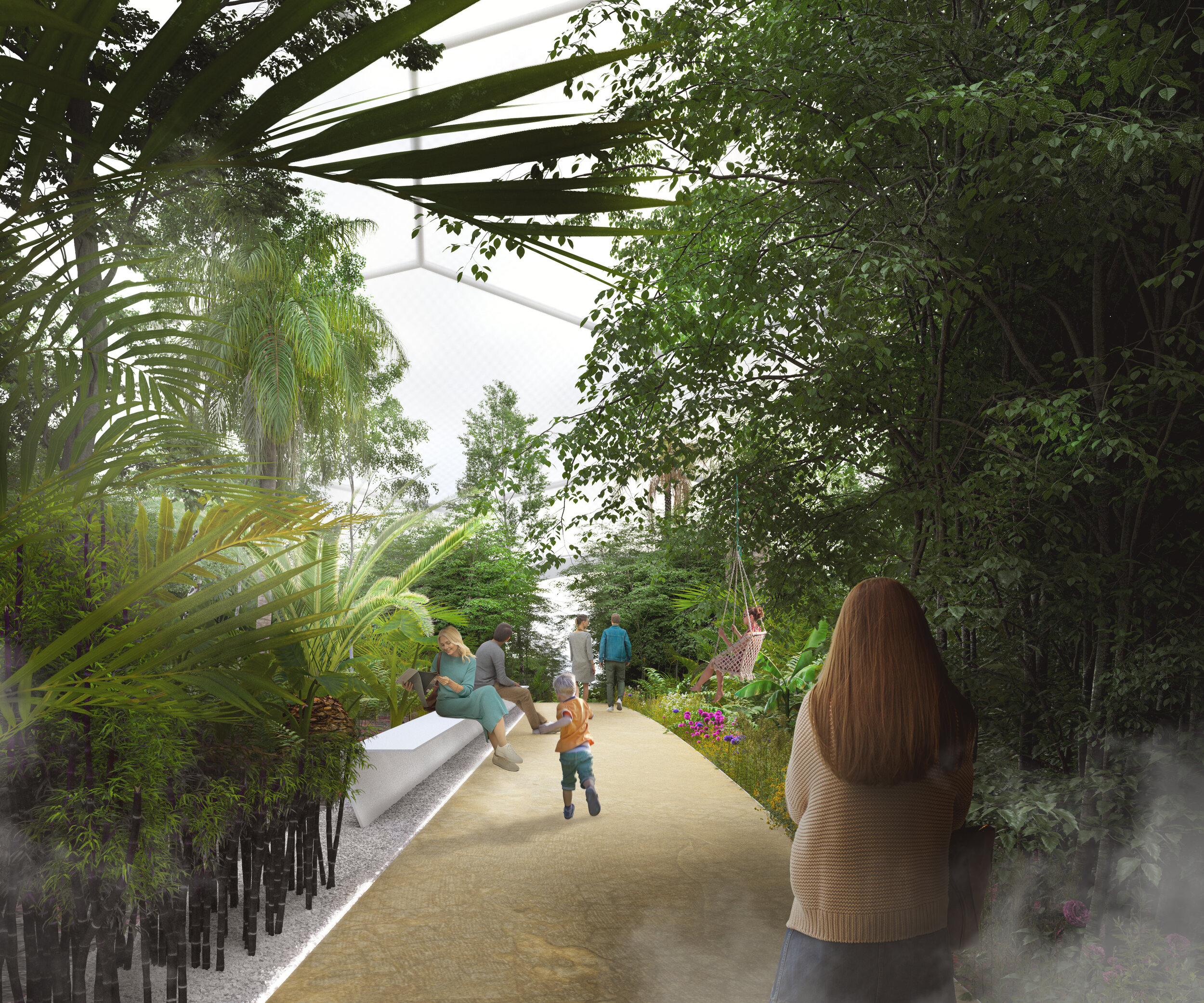The Hot Heart in Helsinki - an energy challenge
A trans-disciplinary team coordinated by Carlo Ratti Associati has won the Helsinki Energy Challenge with their design for a series of islands, storing thermal energy and acting as a hub for recreational activities.
Located off the coast of Helsinki, Hot Heart will fulfil the city’s aim to decarbonise its heating system by 2030. Ten cylindrical basins 225-metres in diameter collectively hold up to 10 million cubic metres of water, functioning like an enormous thermal battery.
Hot Heart is planned to enter its masterplanning phase this year and be fully implemented in 2028. Image credit - CRA-Carlo Ratti Associati.
This low, or even negative-cost renewable energy can be converted into heat and stored in tanks, to be withdrawn into the Helsinki heat distribution channels in winter.
Four of the ten hot water reservoirs are enclosed in transparent domes that house the Floating Forests- tropical ecosystems from the world’s key rainforest zones, heated by the basins below.
Not only do they give visitors a recreational space and new educational attraction, but they provide sunlight even during harsh Nordic winters through their use of sun-like LED technology. According to Carlo Ratti Associati, “they create a unique public space for local residents and provide an attraction to international travellers.”
Image credit - CRA-Carlo Ratti Associati.
Carlo Ratti Associati worked with an international group of consulting and manufacturing firms and energy optimisation experts, including Ramboll, Transsolar, Danfoss Leanheat, and Schneider Electric.
Together they developed the concept of using seawater heat pumps to convert wind, solar and other forms of power into heat to be stored in the reservoirs.
Hot Heart will fulfil the city’s aim to decarbonise its heating system by 2030. Image credit - CRA-Carlo Ratti Associati.
The designers are aware that while the production of renewable energy is lowering in cost, storage is expensive.
Their idea is to store it in thermal batteries when prices are low or negative to be extracted when demand is high on the district’s heating system, and the model could be replicated in other coastal cities with similar climates.
Hot Heart is operated by artificial intelligence, which synchronises the production and consumption of thermal energy and stabilises the national energy grid in relation to fluctuating supply.
Ten cylindrical basins 225-metres in diameter collectively hold up to 10 million cubic metres of water, functioning like an enormous thermal battery. Image credit - CRA-Carlo Ratti Associati.
It is expected to cover the entire heating needs of Helsinki by the end of the decade, with no carbon emissions and at an estimated cost 10% lower than today.
“Hot Heart offers a unique experience, bringing the natural and artificial worlds together,” says Carlo Ratti, Carlo Ratti Associati founding partner. “It is inspired by the Finnish concept of Jokamiehen Oikeudet, which could be translated as ‘every person’s right’: the right to reflect and unwind while peacefully enjoying nature.”
Hot Heart is planned to enter its masterplanning phase this year and be fully implemented in 2028.




